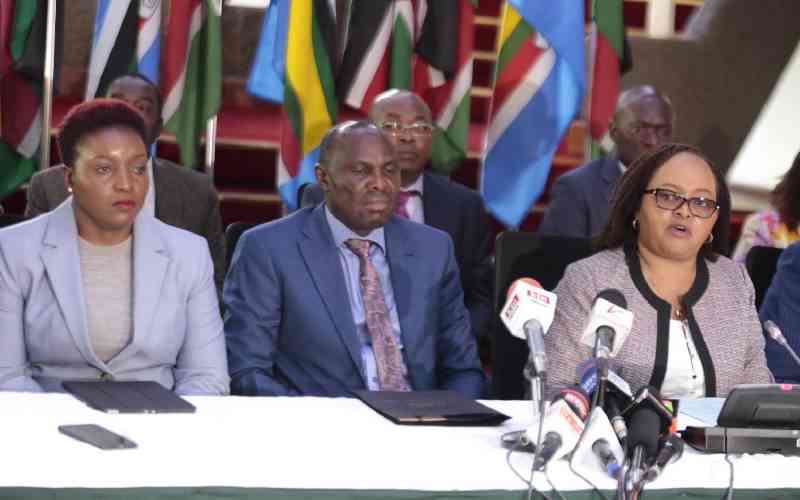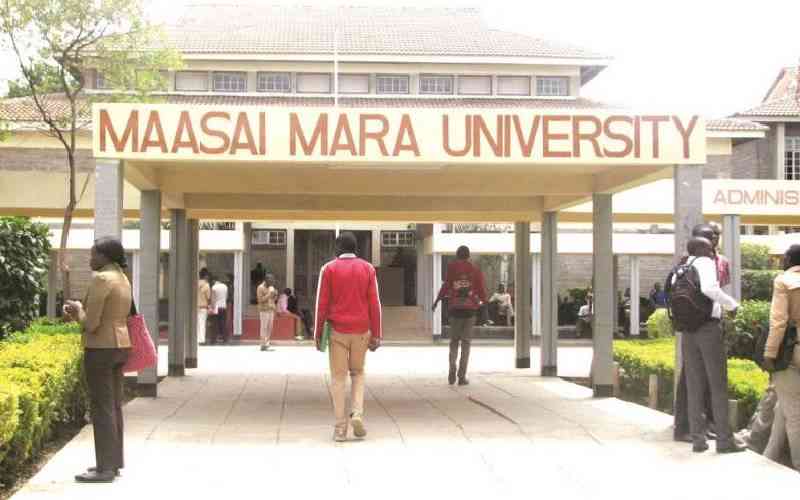By Luke Anami and Peter Opiyo
NAIROBI; KENYA: County governments will be starved of cash for at least four months if Parliament does not pass laws to give them early access to public funds.
This was the warning from the Commission for Revenue Allocation as Parliament’s Budget Committee upheld the revised formula that will determine what the 47 counties get once devolution kicks in. CRA says Parliament must pass two Bills to facilitate access to an estimated Sh200 billion ahead of the next fiscal year. The Budget Committee has recommended that the funds be factored in the 2013-14 budget, which will be read four months after the county governments are created.
If Parliament adopts CRA’s revised formula, marginalised counties like Turkana and Mandera will get higher allocations than previously expected, while Lamu and Tharaka-Nthi will get less.
Turkana, with a population of 855,399, would get Sh2.4 billion more than its initial allocation in April. This raises its total allocation to Sh8.2 billion, making it the region with the second highest allocation. Nairobi County, with a population of Sh3.1 million, would receive the highest allocation in the 2012/2013 financial year receiving Sh10.1 billion. Mandera, with an increment of Sh1.2 billion, is the second biggest beneficiary should the new formula be implemented.
Poverty index
If MPs approve the new figures, poverty index will account for 20 per cent of the allocation, up from 12 per cent, which translates to Sh40 billion of the Sh203 billion to be shared among the 47 counties. The revision has, however, seen population index reduced to 45 per cent of the allocation from the initial 60 per cent.
MPs from populous counties like Nairobi, Kiambu, Bungoma, Nakuru and Kakamega, which have together lost Sh3.9 billion due to the changes, have warned they would fight back when the report is considered in the House.
Separately, CRA has warned if two crucial bills are not passed by the Tenth Parliament before dissolution in January, county governments will not access the money. These are the Division of Revenue Bill and the County Allocation of Revenue Bill, which guide sharing of revenue between national and county governments and among counties. “County governments will not have money if the two crucial Bills are not passed,” CRA chairman Micah Cheserem told The Standard On Saturday yesterday.
Cheserem said that county governments come into effect in March 2013 after elections, which is four months before the end of the 2012/13 financial year. Therefore funds should be made available for the county governments before next year’s elections, he added.
“Though we are happy the Parliamentary Committee has adopted the report which underwent public input, the formula should be implemented under this year’s financial year, 2012/13 and not 2013/14 financial year as the committee has suggested,” Cheserem said. “Once the formula has been approved by Parliament and signed into law by the President, two Bills to operationalise county governments must be written.
“Parliament should discuss the Division of Revenue Bill to determine vertical distribution of revenue from the National to County governments,” Cheserem explained.
Funds access
“If it is not in place, there will be no way counties will access funds from the National government. The county governments only require 20 per cent of the Sh1 trillion Treasury has raised. The figure comes to Sh203 for the county governments while the National Government will remain with 80 per cent, Sh 800 billion,” he said.
The amount to be shared out equally has been increased to 25 per cent, up from 20 per cent, land area (eight per cent) while the fiscal responsibility was maintained at two percent. Sh203 billion would go to the counties, comprising 33 per cent of the national revenue, which Treasury estimates at Sh405 billion.
Stay informed. Subscribe to our newsletter
“The total cost for running all the 47 counties is approximated at Sh203 billion or 33 per cent of the total shareable revenue,” states the parliamentary Budget committee report. The Constitution provides for a minimum of 15 per cent to be channeled to the counties. The Equalization Fund would be Sh3 billion, comprising five per cent of the national revenue.
Apart from Nairobi and Turkana County, other counties with higher allocations are Mandera (1 million inhabitants) and Kakamega (1.6 million inhabitants) counties would each receive Sh6.9 billion. Bungoma closes the top five at an allocation of Sh6.6 billion. It has a population of 1.6 million.
Population data
Lamu with a population of 101,539 would receive Sh1.6 billion followed by Isiolo at Sh2.3 billion. Isiolo has a population of 143,294. Tharaka Nithi (365,330 inhabitants) will get Sh2.4 billion while Elgeyo Marakwet (369,998 inhabitants) will get Sh2.5 billion. And Taita-Taveta with a population of 284,657 closes the last five at an allocation of Sh2.58 billion.
CRA relied on the population data from the Housing and Population Census of 2009. In choosing population, CRA said population is a simple, objective and transparent indicator of expenditure needs of the counties.
 The Standard Group Plc is a
multi-media organization with investments in media platforms spanning newspaper
print operations, television, radio broadcasting, digital and online services. The
Standard Group is recognized as a leading multi-media house in Kenya with a key
influence in matters of national and international interest.
The Standard Group Plc is a
multi-media organization with investments in media platforms spanning newspaper
print operations, television, radio broadcasting, digital and online services. The
Standard Group is recognized as a leading multi-media house in Kenya with a key
influence in matters of national and international interest.
 The Standard Group Plc is a
multi-media organization with investments in media platforms spanning newspaper
print operations, television, radio broadcasting, digital and online services. The
Standard Group is recognized as a leading multi-media house in Kenya with a key
influence in matters of national and international interest.
The Standard Group Plc is a
multi-media organization with investments in media platforms spanning newspaper
print operations, television, radio broadcasting, digital and online services. The
Standard Group is recognized as a leading multi-media house in Kenya with a key
influence in matters of national and international interest.








